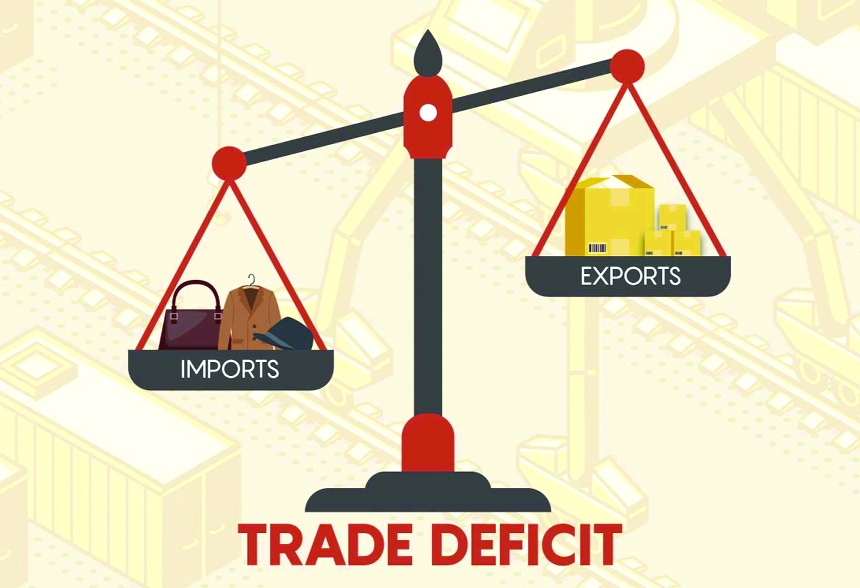
Business Desk :
The country’s trade deficit jumped by 53 per cent year-on-year to $27.5 billion in the July-April period of the current fiscal year due to surge in imports against lower export receipts, exceeding last year’s total shortfall. According to the Bangladesh Bank data, the country paid $68.67 billion in import bills in the 10 months ending in April, when export earnings stood at $41.10 billion during the aforesaid time.
The amount of deficit originating from the nation’s overseas trade crossed the previous peak of $23.7 billion, registered last fiscal year, thanks to spiralling import bills resulting from soaring commodity prices in the international market for supply chain disruptions and war in Ukraine.
With its inadequate domestic production, Bangladesh has to import a number of key commodities, namely wheat, edible oil, sugar and pulses.
The nation also has to import petroleum, industrial raw materials and intermediate goods to run both its domestic market and export-oriented industries.
Imports, which slowed in the last two months, were still 41 per cent higher year-on-year in the July-April period whereas exports grew 35 per cent at the same time.
The gap against the backdrop of a drop in the inflow of remittance, a major pillar of Bangladesh’s $465 billion economy, worsened the availability of foreign exchange to finance imports and increased pressure on once comfortable foreign exchange reserves. Current account deficit ballooned over nine times year-on-year to $15.30 billion, the highest on record, in the July-April period of the current fiscal, central bank data showed.
The previous widest deficit in the current account was the $9.56 billion recorded in FY18. The amount of imbalance was $4.5 billion last fiscal year.
Overall balance with regard to the external account also became negative until this fiscal year from positive balances in the last two fiscal years, according to the data. Dr Khondaker Golam Moazzem, Research Director at the Centre for Policy Dialogue (CPD), said the trade deficit is not just a Bangladesh-centric phenomenon, it has been in other developing countries as well. Where, both current account and trade balance deficit are increasing.
“This is mainly due to higher import costs and lower export growth. The reason for the increase in import costs is that commodities and petroleum have to be imported at higher prices. Although remittances played a good role last year, it is comparatively less this year. That has also affected the overall balance,” he added.

